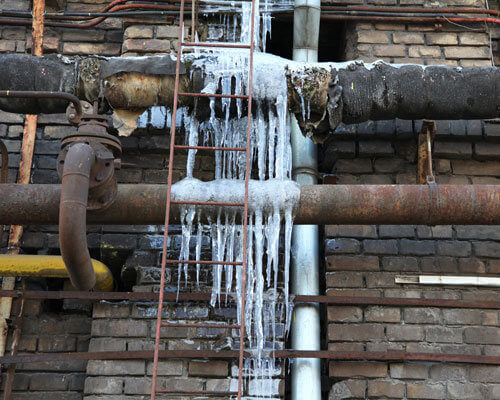Important Tips to Avoid Frozen Pipes in Cold Weather
Important Tips to Avoid Frozen Pipes in Cold Weather
Blog Article
Just how do you feel in relation to Preventing and dealing with frozen pipes?

Winter can wreak havoc on your pipes, particularly by freezing pipes. Here's just how to avoid it from happening and what to do if it does.
Intro
As temperature levels drop, the threat of frozen pipelines increases, possibly resulting in pricey repairs and water damages. Understanding just how to prevent frozen pipelines is essential for home owners in cool environments.
Recognizing Frozen Pipes
What triggers pipelines to freeze?
Pipes freeze when subjected to temperature levels listed below 32 ° F (0 ° C) for expanded durations. As water inside the pipelines freezes, it broadens, putting pressure on the pipe walls and potentially triggering them to rupture.
Risks and damages
Frozen pipelines can lead to water supply interruptions, building damages, and costly repair work. Burst pipelines can flood homes and trigger extensive structural damage.
Indications of Frozen Pipes
Determining icy pipes early can prevent them from bursting.
How to identify frozen pipes
Seek reduced water flow from taps, uncommon smells or sounds from pipes, and visible frost on revealed pipes.
Avoidance Tips
Protecting vulnerable pipes
Wrap pipelines in insulation sleeves or make use of warm tape to shield them from freezing temperatures. Concentrate on pipelines in unheated or exterior areas of the home.
Heating strategies
Maintain indoor spaces appropriately heated, especially areas with plumbing. Open up closet doors to allow warm air to circulate around pipes under sinks.
Safeguarding Outside Plumbing
Garden tubes and exterior taps
Separate and drain pipes yard pipes before winter season. Install frost-proof spigots or cover exterior faucets with insulated caps.
What to Do If Your Pipelines Freeze
Immediate activities to take
If you presume frozen pipelines, maintain faucets open to relieve stress as the ice melts. Utilize a hairdryer or towels soaked in hot water to thaw pipes gradually.
Long-Term Solutions
Architectural adjustments
Think about rerouting pipes away from outside wall surfaces or unheated locations. Add additional insulation to attic rooms, cellars, and crawl spaces.
Upgrading insulation
Invest in premium insulation for pipes, attics, and walls. Proper insulation helps maintain consistent temperature levels and decreases the danger of icy pipelines.
Final thought
Stopping frozen pipelines calls for positive steps and fast reactions. By recognizing the causes, signs, and safety nets, house owners can secure their plumbing during cold weather.
5 Ways to Prevent Frozen Pipes
Drain Outdoor Faucets and Disconnect Hoses
First, close the shut-off valve that controls the flow of water in the pipe to your outdoor faucet. Then, head outside to disconnect and drain your hose and open the outdoor faucet to allow the water to completely drain out of the line. Turn off the faucet when done. Finally, head back to the shut-off valve and drain the remaining water inside the pipe into a bucket or container. Additionally, if you have a home irrigation system, you should consider hiring an expert to clear the system of water each year.
Insulate Pipes
One of the best and most cost-effective methods for preventing frozen water pipes is to wrap your pipes with insulation. This is especially important for areas in your home that aren’t exposed to heat, such as an attic. We suggest using foam sleeves, which can typically be found at your local hardware store.
Keep Heat Running at 65
Your pipes are located inside your walls, and the temperature there is much colder than the rest of the house. To prevent your pipes from freezing, The Insurance Information Institute suggests that you keep your home heated to at least 65 degrees, even when traveling. You may want to invest in smart devices that can keep an eye on the temperature in your home while you’re away.
Leave Water Dripping
Moving water — even a small trickle — can prevent ice from forming inside your pipes. When freezing temps are imminent, start a drip of water from all faucets that serve exposed pipes. Leaving a few faucets running will also help relieve pressure inside the pipes and help prevent a rupture if the water inside freezes.
Open Cupboard Doors
Warm your kitchen and bathroom pipes by opening cupboards and vanities. You should also leave your interior doors ajar to help warm air circulate evenly throughout your home.

I was made aware of that write-up on Winter Plumbing Precautions: Preventing Frozen Pipes from a good friend on another site. Sharing is caring. Helping people is fun. Kudos for being here. Come back soon.
Show Details Report this page